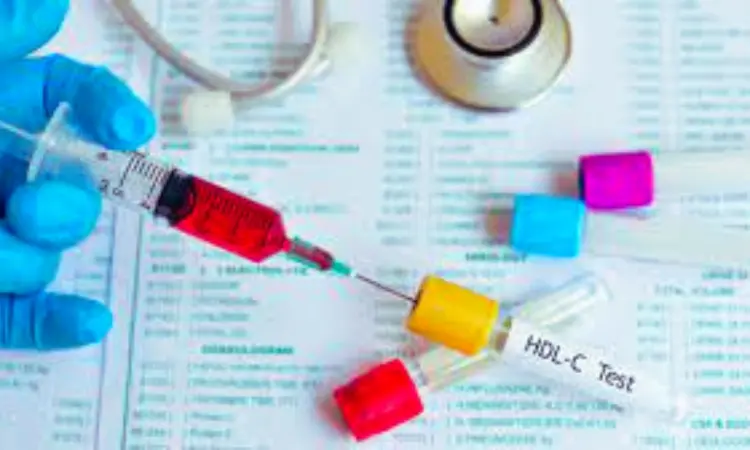- Home
- Medical news & Guidelines
- Anesthesiology
- Cardiology and CTVS
- Critical Care
- Dentistry
- Dermatology
- Diabetes and Endocrinology
- ENT
- Gastroenterology
- Medicine
- Nephrology
- Neurology
- Obstretics-Gynaecology
- Oncology
- Ophthalmology
- Orthopaedics
- Pediatrics-Neonatology
- Psychiatry
- Pulmonology
- Radiology
- Surgery
- Urology
- Laboratory Medicine
- Diet
- Nursing
- Paramedical
- Physiotherapy
- Health news
- Fact Check
- Bone Health Fact Check
- Brain Health Fact Check
- Cancer Related Fact Check
- Child Care Fact Check
- Dental and oral health fact check
- Diabetes and metabolic health fact check
- Diet and Nutrition Fact Check
- Eye and ENT Care Fact Check
- Fitness fact check
- Gut health fact check
- Heart health fact check
- Kidney health fact check
- Medical education fact check
- Men's health fact check
- Respiratory fact check
- Skin and hair care fact check
- Vaccine and Immunization fact check
- Women's health fact check
- AYUSH
- State News
- Andaman and Nicobar Islands
- Andhra Pradesh
- Arunachal Pradesh
- Assam
- Bihar
- Chandigarh
- Chattisgarh
- Dadra and Nagar Haveli
- Daman and Diu
- Delhi
- Goa
- Gujarat
- Haryana
- Himachal Pradesh
- Jammu & Kashmir
- Jharkhand
- Karnataka
- Kerala
- Ladakh
- Lakshadweep
- Madhya Pradesh
- Maharashtra
- Manipur
- Meghalaya
- Mizoram
- Nagaland
- Odisha
- Puducherry
- Punjab
- Rajasthan
- Sikkim
- Tamil Nadu
- Telangana
- Tripura
- Uttar Pradesh
- Uttrakhand
- West Bengal
- Medical Education
- Industry
Higher non-HDL to HDL cholesterol ratio Linked to Increased Psoriasis Risk: Study

A new study published in the journal of Experimental Dermatology revealed higher non-HDL to HDL cholesterol ratio (NHHR) is positively associated with psoriasis prevalence, particularly in males, suggesting its potential as a clinical risk indicator.
This research used data from the U.S. National Health and Nutrition Examination Survey (NHANES) covering more than a decade of health records to investigate the association between the non-high-density lipoprotein to high-density lipoprotein cholesterol ratio (NHHR) and psoriasis. The analysis included 15,437 American adults and adjusted for a range of factors, including cardiovascular disease, medication use, and glucocorticoid therapy.
The findings showed that individuals with higher NHHR levels were significantly more likely to have psoriasis. Also, the individuals in the highest NHHR quartile had a 48% greater risk of developing the condition when compared to the individuals in the lowest quartile. On a continuous scale, every unit increase in NHHR was linked to an 8% higher odds of psoriasis (OR = 1.08, 95% CI: 1.00–1.17, p = 0.039).
The subgroup analyses were conducted across age, sex, and income groups. While the association was consistent, certain subpopulations showed stronger patterns which highlighted that lipid imbalance may interact differently with demographic and socioeconomic factors. In addition, when the severity of psoriasis was examined in specific survey cycles (2003–2006 and 2011–2014), higher NHHR was again associated with more severe forms of the disease.
The study also compared NHHR with traditional lipid markers, including HDL-C (good cholesterol), total cholesterol, and non-HDL-C. The cholesterol ratio outperformed individual markers in predicting psoriasis risk, suggesting that NHHR could be a more reliable tool for assessing lipid-related inflammation in patients at risk.
To extend these findings beyond observational data, this research employed Mendelian randomisation (MR) using genetic information from genome-wide association studies across diverse populations, which included European, East Asian, African, and Middle Eastern groups.
By applying meta-analysis, the MR component provided stronger precision and further supported the causal relationship between cholesterol imbalance and psoriasis. The base model demonstrated a modest but significant association, with the effect becoming stronger when stratified by NHHR quartiles. Additional columns compared traditional lipid measures, which showed weaker or inconsistent links.
Subgroup tables highlighted that younger adults and lower-income individuals had a more pronounced association. Severity-stratified tables highlighted the risk gradient, with higher NHHR linked to more extensive psoriasis involvement. Overall, these findings add to a growing body of evidence that psoriasis is not merely a skin condition but a systemic inflammatory disease tied to metabolic health.
Source:
Dai, H., Li, Z., Hu, J., Chen, W., Wang, Q., Liu, K., He, Y., & Li, L. (2025). The association between non-high-density lipoprotein cholesterol to high-density lipoprotein cholesterol ratio with psoriasis: A cross-sectional survey and genetic approach. Experimental Dermatology, 34(9), e70165. https://doi.org/10.1111/exd.70165
Neuroscience Masters graduate
Jacinthlyn Sylvia, a Neuroscience Master's graduate from Chennai has worked extensively in deciphering the neurobiology of cognition and motor control in aging. She also has spread-out exposure to Neurosurgery from her Bachelor’s. She is currently involved in active Neuro-Oncology research. She is an upcoming neuroscientist with a fiery passion for writing. Her news cover at Medical Dialogues feature recent discoveries and updates from the healthcare and biomedical research fields. She can be reached at editorial@medicaldialogues.in
Dr Kamal Kant Kohli-MBBS, DTCD- a chest specialist with more than 30 years of practice and a flair for writing clinical articles, Dr Kamal Kant Kohli joined Medical Dialogues as a Chief Editor of Medical News. Besides writing articles, as an editor, he proofreads and verifies all the medical content published on Medical Dialogues including those coming from journals, studies,medical conferences,guidelines etc. Email: drkohli@medicaldialogues.in. Contact no. 011-43720751


